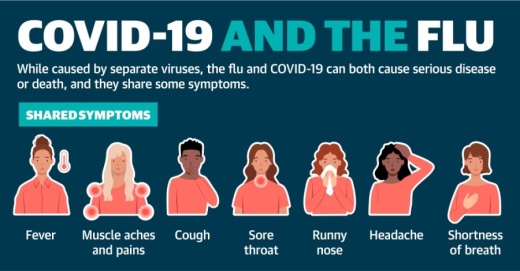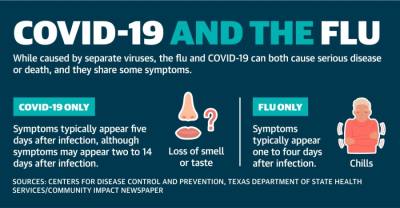Dr. Jennifer Shuford, infectious disease medical officer for the Texas Department of State Health Services, said that while flu season typically peaks between December and March, the timing and severity of the flu’s spread every year is uncertain.
“Getting the flu shot is the single most important thing that a person can do to prevent themselves from getting the flu or from severe flu and its complications,” she said.
Shuford said that while DSHS works every year to share messaging about flu preparedness and prevention, efforts to inform Texans about flu shots and recommended precautions have ramped up ahead of this fall. And in addition to communications from the state organization, Shuford also said the Centers for Disease Control and Prevention is providing flu vaccines for residents of all ages this year in addition to the department’s ongoing Texas Vaccines for Children Program.
Shuford said the state department will monitor Texas hospital capacity over the coming months. She said that while COVID-19 hospitalizations throughout Texas decreased in September, increases during the fall and winter may again lead to capacity issues throughout the state.
“We don’t feel like we’re out of the woods,” Shuford said. “We feel like our health care system is safe at this moment in time, but that any addition of flu in our communities or even COVID-19 in our communities could start to impact and stress our healthcare system.”
In Montgomery County, general hospital bed usage has remained at or below 1,000 since early September—below the county’s operational capacity of 1,275 beds and surge capacity of 1,529 beds, according to data from the Southeast Texas Regional Advisory Council. Misti Willingham, public information officer for the Montgomery County Hospital District, said county health officials typically see a rise in hospitalizations due to the flu and anticipate that potential need for beds as well as increased testing in the community this year.
“We are hopeful the CDC guidelines regarding social distancing, mask-wearing, hand hygiene and surface disinfection will lead to fewer people contracting the seasonal flu as well as COVID-19. However, the signs and symptoms are very similar in presentation. Testing is the only way to know for sure,” Willingham said in an email.
Dr. Sam Rolon, a Baylor St. Luke’s Medical Group Creekside Family Medicine physician in The Woodlands, also said that residents following CDC-recommended guidelines related to COVID-19 could provide an additional protection against the spread of the flu and related illnesses this year.
“Patients that might just have a cough and shortness of breath from allergies or asthma, they might get screened for COVID and they probably should be,” Rolon said. “They might get screened for flu this year and they probably should be.”
Local and state officials advise that anyone ages 6 months or older get their flu shots in October, unless they have a confirmed medical reason not to. Willingham said the county hospital district offers flu vaccinations for uninsured, underinsured and Medicaid-recipient county residents.
“We might still have a very severe flu season,” Shuford said. “It is still very important for people to get their flu shots for this flu season.”






